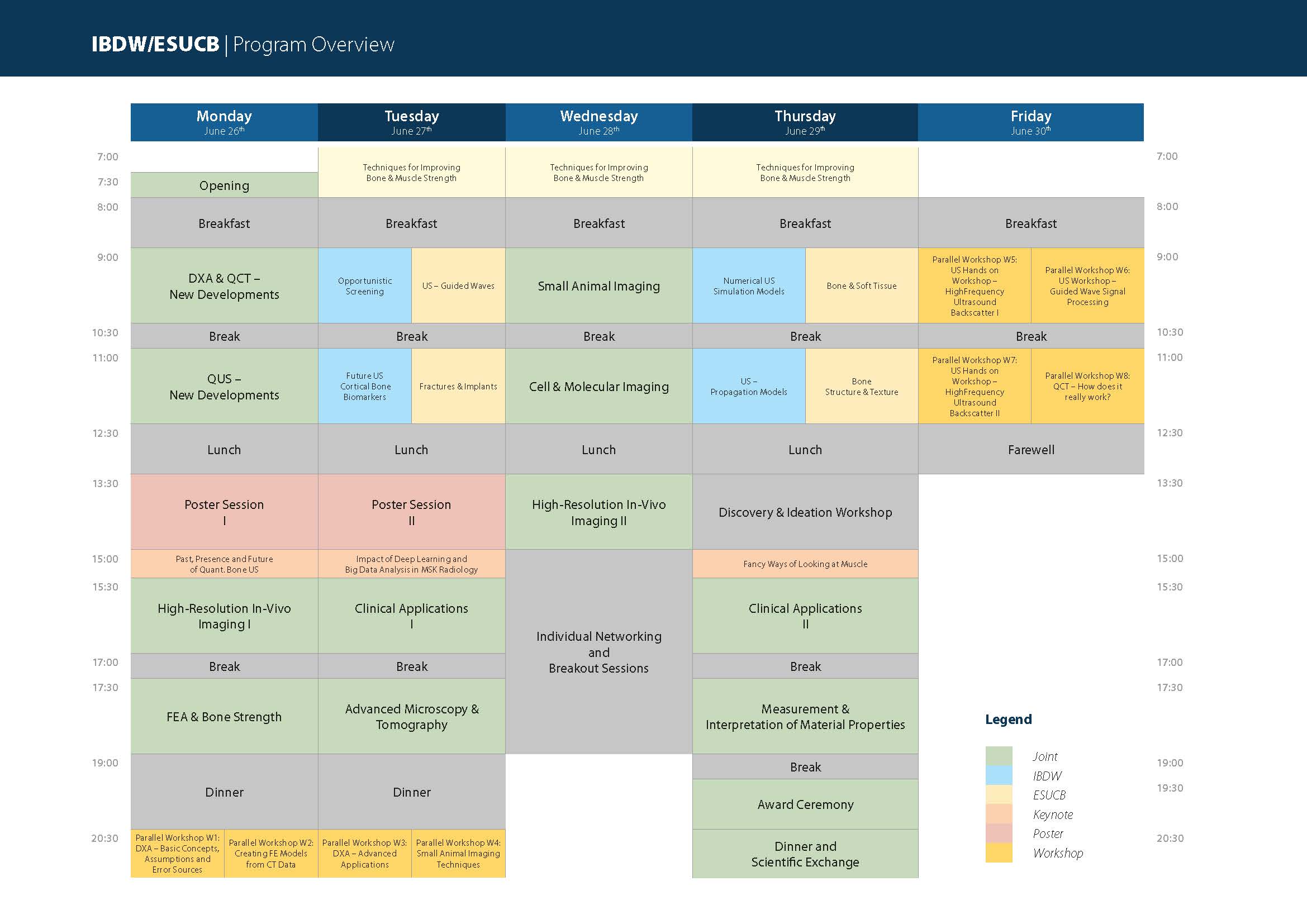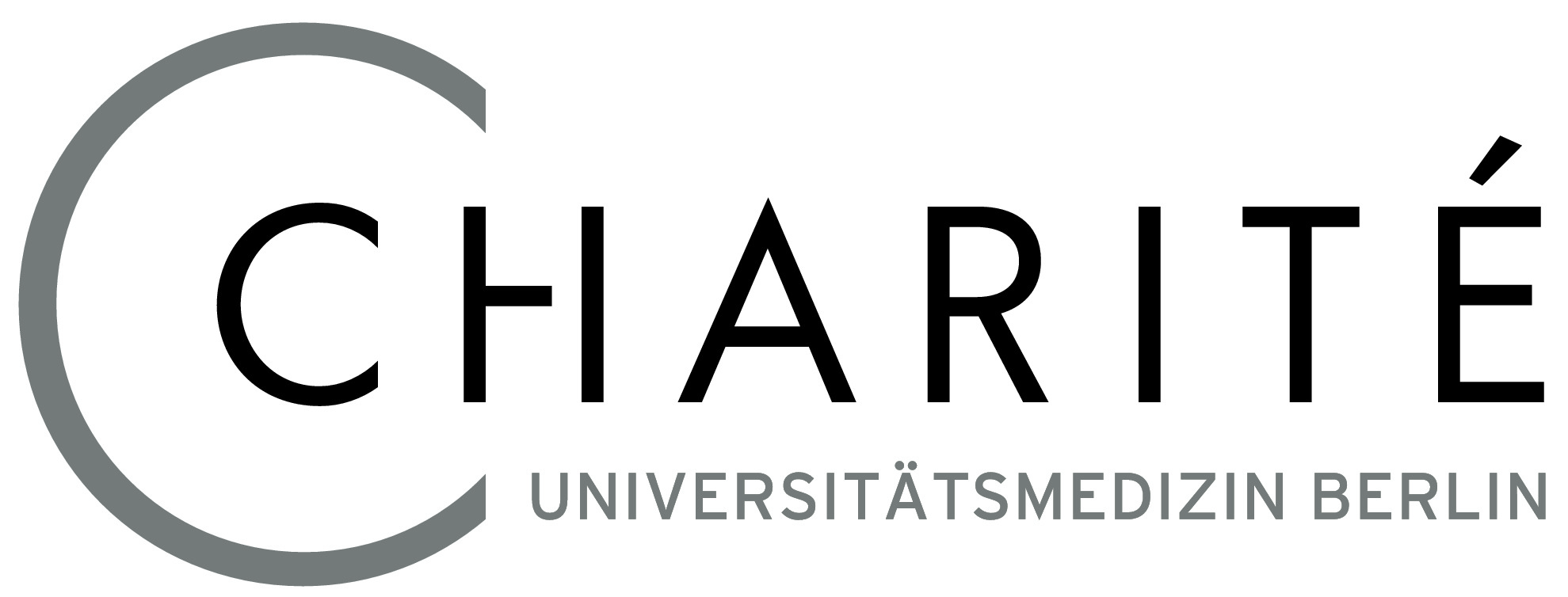Monday, June 26, 2017 | 20:30 - 21:30
W1 DXA: Basic Concepts, Assumptions and Error Sources
Speaker: Kevin Wilson
DXA is by far the most widely used technique to measure bone mineral density. The two workshops will provide in depth informatiThe first workshop focusses on the basic concepts, assumptions and error sources of DXA such as: What is BMD really? What are some of the key assumptions made by commercially available DXA scanners? What errors are frequently seen in the published literature that utilizes DXA? Given these facts, why is DXA widely used clinically?
The target audience for the first lecture includes: the novice unfamiliar with DXA technique, the user who regards the DXA machine as a black box, and finally, those who just want to be able to critically read the peer-reviewed literature where DXA is employed in the research or pre-clinical setting.
We are happy that the two workshops will be given by two of the world leading experts in the field. Kevin Wilson, PhD heads DXA development at Hologic and has been instrumental in the implementation and innovation of DXA technology over the last 20 years. John Shepherd PhD is a professor in Radiology and Biomedical Imaging at the University of California San Francisco. He has also been in the field for over 20 years developing novel applications and biomarkers using DXA technology. He has contributed/chaired scientific committees on DXA standardization, in depth technical reports on DXA for the ICRU and IAEA, and drafted ISCD positions for clinical use of DXA. He has published over 170 peer reviewed articles in the field, a Fulbright scholar and the most recent past President of the ISCD.
Monday, June 26, 2017 | 20:30 - 21:30
W2 Creating FE Models from CT Data
Speaker: Dieter Pahr
Image based FEA modeling is a challenging task. Several key aspects like image processing, meshing, material mapping, and post-processing need to be considered. But also accompanying tasks, for example, data storage, creating workflows, scripting, and parameter studies are important in order to obtained validated FEA results efficiently. Within this workshop the software medtool (www.dr-pahr.at) will be used to show possibilities and solutions with respect to the above points. Applicants get access to the software as well as short examples for hand-ons.
Tuesday, June 27, 2017 | 20:30 - 21:30
W3 DXA: Advanced Applications
Speaker: John Shepherd
Today DXA is much more than BMD measurement of spine and hip. Advanced applications, the topics of the second workshop include the measurement of modeling of soft tissue and special regions like visceral and subcutaneous fat, special considerations for infants and children, finite element modeling, shape and appearance modeling, and even quantification of breast density. Thus, the second workshop is to fully understand the breadth of DXA capabilities for research.
We are happy that the two workshops will be given by two of the world leading experts in the field. Kevin Wilson, PhD heads DXA development at Hologic and has been instrumental in the implementation and innovation of DXA technology over the last 20 years. John Shepherd PhD is a professor in Radiology and Biomedical Imaging at the University of California San Francisco. He has also been in the field for over 20 years developing novel applications and biomarkers using DXA technology. He has contributed/chaired scientific committees on DXA standardization, in depth technical reports on DXA for the ICRU and IAEA, and drafted ISCD positions for clinical use of DXA. He has published over 170 peer reviewed articles in the field, a Fulbright scholar and the most recent past President of the ISCD.
Tuesday, June 27, 2017 | 20:30 - 21:30
W4 Small Animal Imaging Techniques
Speaker: Claus Glüer /Tobias Bäuerle
The workshop „Small animal imaging techniques“ will be moderated by Claus Glüer, PhD and Tobias Bäuerle, MD. The presenters will give an overview on multimodal techniques for small animal imaging including MRI, CT, PET, SPECT, ultrasound and optical imaging. Thereby, techniques and applications on musculoskeletal imaging will be explained and summarized with experience from the small animal imaging centers at the Universities Kiel and Erlangen, Germany.
Friday, June 30, 2017 | 09:00 - 10:30
W5 US Hands On Workshop: High-Frequency Ultrasound Backscatter I
Speaker: Marie Mueller
Single elements have been historically favored for the ultrasonic assessment of bone. However, the use of multiple elements array is starting to spread across multiple research groups of the community. The workshop will focus on using linear arrays connected to a multiple channel ultrasound scanner (Verasonics® Vantage, Verasonics, Seattle, WA), to record backscattered signals in the 4-7 MHz frequency range. We will show how to extract the incoherent contribution to the signals, and how, by exploiting multiple scattering, which occurs in this higher frequency range, some parameters of the micro-architecture can be retrieved. We will present examples on bone phantoms, and on real bovine bone.
Friday, June 30, 2017 | 09:00 - 10:30
W6 US Hands On Workshop: Guided Wave Signal Processing
Speaker: Jean-Gabriel Minonzio
Guided waves can be found in a variety of domains such as musical instruments, optical fibers or underwater acoustics. In these cases, waves are propagating in a bounded medium and thus, the different reflections or paths interacts to to create interference patterns leading to guided waves. Measurements of such waves together with appropriate waveguide modeling have therefore the potential for providing estimations of both geometric and elastic properties of the waveguide. This point of view is currently applied for in vivo cortical bone assessment, using axial transmission technique. In this configuration, ultrasonic transmitters and receivers are aligned with the bone axis.
The aims of the workshop is to provide insights into the following topics:
- axial transmission
- guided waves of the free plate model (Lamb modes)
- guided wave estimation using spatio-temporal Fourier transform and Radon transform
- enhancement of the guided wave estimation using singular value decomposition (SVD)
- guided wave fitting and waveguide parameter estimation
- soft tissue effect and in vivo measurement
The workshop will be illustrated with experimental examples.
Friday, June 30, 2017 | 11:00 - 12:30
W7 US Hands On Workshop: High-Frequency Ultrasound Backscatter II
Speaker: Kay Raum / Juan Du
Building up on the content of workshop W5, this workshop will demonstrate a medical ultrasound scanner (SonixTouch®, BK Ultrasound, Richmond, BC, Canada), to record backscattered signals from bone with custom transmit sequences and in the 2-10 MHz range. The following topics will be covered:
- overview of system architecture (hardware/software) including 128-channel data acquisition box
- software implementation of custom acquisition sequences (C++/Matlab)
- examples of backscatter measurements in bone
- examples of contrast enhanced measurements
- concepts of spectral data analysis (including validation by experiments/sound propagation simulations)
- live-demo measurements
Results measured on human bones will be presented.
Friday, June 30, 2017 | 11:00 - 12:30
W8 QCT - How Does It Really Work?
Speaker: Klaus Engelke
QCT is a 3D imaging technique to quantify BMD, geometry and is also the basis for FE analysis. This workshop will concentrate on specifics and limitations of QCT such as BMD calibration, influence of CT acquisition and reconstructions parameters on accuracy and precision of the impact of marrow fat. It will revisit the impact of segmentation and spatial resolution on cortical parameters such as thickness and porosity. It will briefly discuss dual energy options and will review and put in context approaches of opportunistic screening. This workshop will be interactive to reflect and discuss results presented during the conference. The potential QCT in OA and RA and in muscle imaging are advanced topics. The workshop will be given by Klaus Engelke, who has more than 25 years in Micro-CT and QCT technology and in musculoskeletal imaging processing.


 Prof. Kay Raum, PhD
Prof. Kay Raum, PhD Radiologisches Institut
Radiologisches Institut